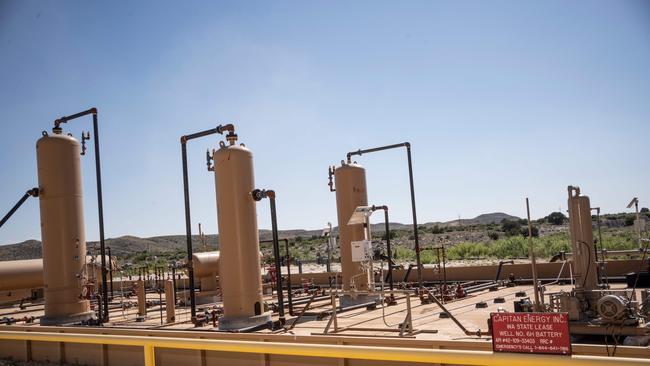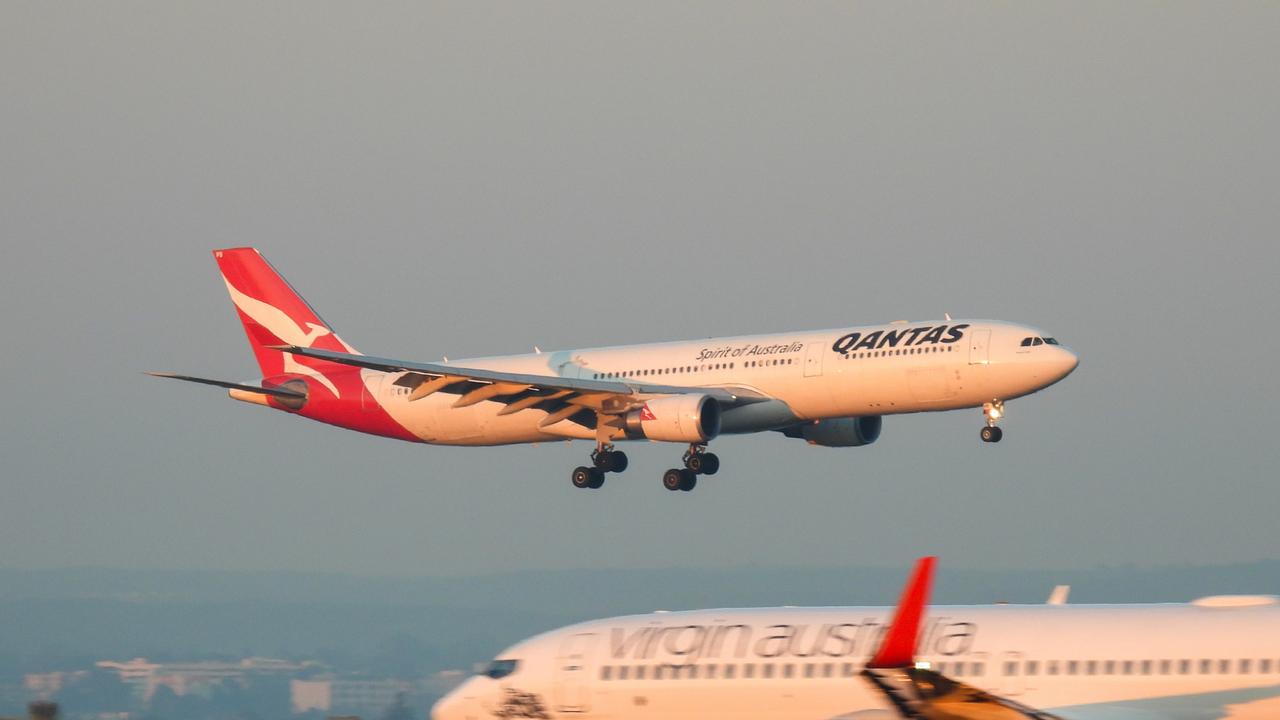Frackers push into once-dead shale patches as oil nears $US100 a barrel
US shale companies are moving drilling rigs back into oil fields that were given up for dead a few years ago, as higher commodity prices make operations profitable again.

Spurred by the highest oil prices in years, shale companies are moving drilling rigs back into oil fields that were all but abandoned a few years ago.
Private oil producers are leading an industry return to places like the Anadarko Basin of Oklahoma and the DJ Basin in Colorado, where drilling had almost completely stopped in mid-2020 when those areas became unprofitable because of lower oil prices.
Oil production in these marginal regions isn’t expected to move the needle in the global market, which is facing tight supplies, but it could help some oil producers who have lost money in past years. Output in the contiguous US by year-end is expected to increase almost solely from the Permian Basin of West Texas and New Mexico, offset by declines elsewhere, according to energy consultant Wood Mackenzie.
Some of the largest shale companies told investors this past week they plan to remain disciplined on capital spending and limit production growth. But with oil climbing above $US90 a barrel, near the highest levels in more than seven years, some peripheral drilling, particularly by smaller companies, is now becoming more feasible even in places like Kansas and Utah, where wells produce far less oil than prolific fields in Texas and New Mexico. The regional revivals show the economic ripple effects when prices surge and mark a turnaround for companies hard-hit by the pandemic.
Brent, the global oil benchmark, rose to $US95.39 a barrel monday, up almost 2 per cent. Charter Oak Production is planning to bring one drilling rig back to the Anadarko Basin this month and contract a larger rig to work there until late 2022, in hopes of doubling or tripling its output from about 1,000 barrels a day. Though oil-field costs have climbed sharply amid new activity and inflation, Charter founder Joe Brevetti said the clock is ticking for his drilling plans because, at some point, high commodity prices will dent demand and lead to lower prices.
“We have a limited window of opportunity,” Mr Brevetti said. “Our costs are obviously up right now, but I’d rather have the higher costs and sell the product at $US90.” Mr Brevetti’s company waited out the oil-demand destruction wrought by the pandemic, slashing drilling activity and storing as many as 60,000 barrels of oil in empty tanks that typically hold other materials used in fracking, instead of selling the oil at low prices. Those moves were key to helping the company survive the downturn, he said.
Putting drilling rigs back to work in the Anadarko Basin wouldn’t have made sense when oil prices were around $US45 a barrel or lower in 2020, with some companies needing at least $US60-per-barrel oil, or even $US80 a barrel, to increase investments, executives said.
The average number of active drilling rigs in the Anadarko Basin has surged from the pandemic low of seven to 46, according to energy data analytics firm Enverus. The latest number is several more than the region had before oil prices collapsed because of economic shutdowns in the spring of 2020, and almost double the average of mid-2021.
In the DJ Basin in Colorado, the average number of active rigs has risen to 15, up from four in 2020, Enverus data show. In the Powder River Basin in Wyoming and the Uinta Basin in Utah, which both saw rigs fall to zero in mid-2020, the rig count has increased to almost a dozen. All three areas need higher oil prices to make wells profitable.
This past week, oil producer Crescent Energy said it would buy assets in the Uinta Basin for $US815m in cash and plans to operate two rigs there this year. Utah is pumping the most oil since late 2014, though it makes up less than 1 per cent of the nation’s output.
Companies have started pumping more oil from regions that yield tiny wells by industry standards. Private oil producer Palomino Petroleum is now running as many as six drilling rigs this year in western Kansas, the largest fleet it has had there in about seven years. The wells it drills there typically start producing about 50 to 100 barrels a day. That oil is moved by truck to a refinery in central Kansas.
Klee Watchous, Palomino’s president, said oil prices climbing back to $US90 a barrel has marked a sharp turnaround in the fortunes of both the company and the small towns near its operations. Mr Watchous said his company is also planning to drill wells in Illinois this year, a state where rigs have rarely ventured recently.
“After many years of fighting this low oil-price situation, it feels great,” Mr Watchous said. “The cycles of boom and bust have been part of the oil-and-gas industry for decades, and no one knows how long it will last.” Still, the renewed investment in many of the regions is nowhere near the levels they saw during shale’s peak years. Most of the largest, publicly traded companies are still focusing instead on top-tier fields like the Permian.
Activity in the Anadarko basin is well below its 2018 levels. Investor interest in the region faded around 2019 following disappointing oil-well performance. Oil companies and their service providers cut hundreds of jobs in the region as activity waned. Some industry observers are hopeful that the region could see the number of drilling rigs there climb above 100 again and bring back jobs, but said that would take years of high oil prices.
Even though the region is on the upswing, some larger private companies are taking a conservative approach. Citizen Energy, a private producer based in Tulsa, Oklahoma, is reinvesting around 50 per cent of the money it generates from operations back into capital expenditures on developing its assets, said finance chief Tim Helms. In shale’s heyday, companies almost always spent more money on drilling and fracking than they made selling the oil and gas.
Mr Helms said Citizen is now running four rigs in the Anadarko Basin, up from two that targeted natural gas in 2020. While the company may consider adding rigs if prices stay high for a long time, it is still focused on generating cash flow while increasing output around 10 per cent this year, he said.
“The financial model would tell you to put eight rigs at work,” Mr. Helms said. “We, like the rest of the industry, have learned our lessons about growing at all costs.”
The Wall Street Journal


